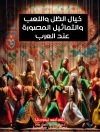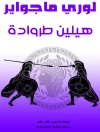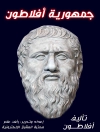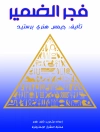Considerations about size and scale have always played a central role within Greek and Roman visual culture, deeply affecting sculptural production. Both Greeks and Romans, in particular, had a clear notion of “colossality” and were able to fully exploit its implications with sculpture in many different areas of social, cultural and religious life. Instead, despite their ubiquitous presence, an equal and contrary categorization for small size statues does not seem to have existed in Greek and Roman culture, leading one to wonder what were the ancient ways of conceptualizing sculptural representations in a format markedly smaller than “life-size.” Even in the context of modern scholarship on Classical Art, few notions appear to be as elusive as that of “small sculpture”, often treated with a certain degree of diffidence well summarized in the formula Klein, aber Kunst? In fact, a large and heterogeneous variety of objects corresponds to this definition: all kinds of small sculpture, from statuettes to miniatures, in a variety of materials including stone, bronze, and terracotta, associated with a great array of functions and contexts, and with extremely different levels of manufacture and patronage. It would be a major misunderstanding to think of these small sculptures in general as nothing more than a cheap and simplified alternative to larger scale statues. Compared with those, their peculiar format allowed for a wider range of choices, in terms, for example, of use of either cheap or extremely valuable materials (not only marble and bronze, but also gold and silver, ivory, hard stones, among others), methods of production (combining seriality and variation), modes of fruition (such as involving a degree of intimacy with the beholder, rather than staging an illusion of “presence”). Furthermore, their pervasive presence in both private and public spaces at many levels of Greek and Roman society presents us with a privileged point of view on the visual literacy of a large and varied public. Although very different in many respects, small-sized sculptures entertained often a rather ambivalent relationship with their larger counterparts, drawing from them at the same time schemes, forms and iconographies. By offering a fresh, new analysis of archaeological evidence and literary sources, through a variety of disciplinary approaches, this volume helps to illuminate this rather complex dynamic and aims to contribute to a better understanding of the status of Greek and Roman small size sculpture within the general development of ancient art.
สารบัญ
Table of contents as of December 22, 2020:
1. Fabrizio Slavazzi (University of Milan), Giovanni Colzani (University of Milan), and Clemente Marconi (New York University and University of Milan)
Introduction
2. Anna Anguissola (University of Pisa)
“In parvolis marmoreis fama: Microsculpture in the Greek and Roman World.”
3. Margherita Bolla (Verona, Archaeological Museum)
“Il riposo di Mercurio. Esiti dell’iconografia del dio seduto nella piccola plastica in bronzo dell’Italia settentrionale.”
4. Alessia Bonadeo (University of Pavia)
“Scripta effigies: un esempio di interazione testo-immagine in Marziale e in Stazio.”
5. Elena Calandra (Ministero dei Beni e delle Attività Culturali)
“Miniaturizing Myth: The Case of the Niobids.”
6. Giovanni Colzani (University of Milan)
“Proximity, Tactility, Mobility: Graeco-Roman Statuettes and their Beholders.”
7. Elisabetta Gagetti (University of Milan)
“Coloured Hard-Stones in the Villa: ‘Precious Sculptures’ from Residential Contexts in the Roman Empire.”
8. Ralf von den Hoff (Freiburg, Albert-Ludwigs-Universität)
“Alexander-Riders: Small Scale Portraits of Alexander the Great on Horseback.”
9. Rosanina Invernizzi (Soprintendenza Archeologica della Lombardia)
“Ercole fanciullo e i serpenti: l’eroe in piccolo in un bronzetto romano da Casteggio (Pavia).”
10. Kenneth Lapatin (J. Paul Getty Museum)
“Materials and their Meanings: An Iconological Approach.”
11. Clemente Marconi (New York University and University of Milan)
“Precious Little Votives: Early Classical Marble Statuettes from Selinunte in Context.”
12. Maria Elisa Micheli (University of Urbino)
“From the Big to the Small: The Case of the Athena Parthenos.”
13. Olga Palagia (University of Athens)
“Small-scale Marble Sculptures from Archaic and Classical Athens.”
14. Eugenio Polito (University of Cassino)
“Una copia ridotta dell’Eracle Epitrapezios: fra scultura ideale e ritratto.”
15. Évelyne Prioux (Centre National de la Recherche Scientifique)
“Small Is Beautiful: Praising Miniature Sculptures in Hellenistic and Roman Imperial Texts.”
16. Fabrizio Slavazzi (University of Milan)
“Gods and Heroes in the Furnishings: Opera Nobilia for Roman Marble Tables.”
17. Giandomenico Spinola (Vatican Museums)
“Il valore e l’uso della scultura romana in formato ridotto.”
18. Michael Squire (King’s College London)
“Sizing up Art: The Intermedial Semantics of Scale in the Hellenistic and Roman Worlds.”
19. Tobias Wild (Freiburg, Albert-Ludwigs-Universität)
“From Masterwork to Patchwork: On the Interrelation of Iconography and Production in Hellenistic Ruler Bronze Statuettes.”
เกี่ยวกับผู้แต่ง
Fabrizio Slavazzi and
Giovanni Colzani, University of Milan, Italy;
Clemente Marconi, Univ. of Milan, Italy and New York Univ., USA.












